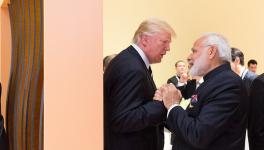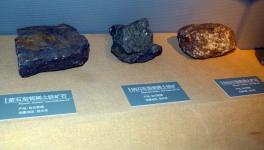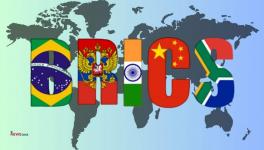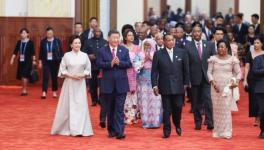India Outstrips China in Smartphone Exports to US

Representational Image. Image Courtesy: PickPik
In the period between April to June this year, India has leapfrogged China to become the major exporter of smartphones to the US market. In this period, the country exported 44% of the smartphones bought by the US market, while China dropped down to 25% from 61%, compared with the same quarter last year.
There are two primary reasons for this, one being the ongoing tariff war between the US and China. The Donald Trump administration has imposed tariffs as high as 51% against Chinese goods coming to the US market. China has, in turn, levied tariffs of 32.6% against American goods entering the Chinese market. This situation may escalate, as the US has threatened to increase tariffs against China to as high as 145% if no agreement is reached between the nations by August 12.
India has profited from this situation, but this alone is not the whole story. Apple has also been shifting its production operation to India from China, partly to counteract the ramping tariffs that the Trump administration is mounting against China. This is the primary factor really, as in terms of production costs alone it is still about 5-8% cheaper to produce an iPhone in China as compared to India.
This week, the Trump administration threatened to impose tariffs as high as 25% against goods from India, with added sanctions on India’s continuing purchase of Russian oil and weaponry. Even with these tariffs in place, India will still be in a more favourable position when compared to China for Apple’s manufacturing units and supply chains to the US market. It is to be noted that at present, electronics and consequently iPhones, are exempt from these tariffs. This could, however, change.
In terms of manufacturing capabilities, Apple has three manufacturing plants in India, two in Tamil Nadu and one in Karnataka. There are plans underway to add two more plants, one in Hosur, Tamil Nadu, run by the Tatas, an Indian company, and the other in Bengaluru to be run by Foxconn, a Taiwanese company.
It is worth noting that the US has no domestic iPhone manufacturing facilities, with the approximately 60 million units that are sold in that market being shipped in from other countries. Were we to look at the total smartphone imports to the US market, we have already accounted for the percentages of this, which are made and shipped by India and China, and Vietnam making up for most of the rest.
Read Also: US threatens sanctions against India for Buying Russian Oil
The backdrop leading to these developments is the pressure put on Apple by Trump to steer its manufacturing away from China and India and to the US. Apple has responded to this with a promise to invest $500 billion toward the making of Apple products in the US. To the chagrin of Trump, however, Apple, whose present CEO is Tim Cook, also intends to up its production in India with the aim of making 25% of its iPhones that are shipped globally in the country.
In the mix of this is the very real issue of what an iPhone made in the US may end up costing the buyer. Estimates regarding the inflation in price range from 25% to over 190%. This mostly has to do with labour costs for assembly and testing, which per unit in China comes to about $40, whereas in the US it would be $200.
Even if this were to be handled in some way, most of the components for the iPhone are actually manufactured in Asia. The design of the product does admittedly still come from Apple’s headquarters in California. The processor, however, is made by the Taiwanese Semiconductor Manufacturing Co. in Taiwan, the display is produced by South Korean companies LG and Samsung. The Gorilla glass that protects the display is a rare exception, as it is made by Corning, a company based in the US, with most of the other components being made in China.
Even if assembly and manufacture were to be relocated to the US, from its present situation in factories based out of China, India, and Vietnam, transferring this entire supply chain would be a tall order. A step in this direction is visible, however, with the Taiwanese Semiconductor Manufacturing Co. having opened a chip manufacturing plant in Arizona, which has already started operations.
The assembly, probably the easiest part in the entire production operation would be the simplest aspect to institute in US shores. Yet, doing so would mean that Apple would have to bear the brunt of higher labour and testing costs. How these long-term challenges for industry are met by the Trump administration and Apple, remain to be seen.
K S Arsh is an independent journalist pursuing a PhD in Philosophy. The views are personal.
Get the latest reports & analysis with people's perspective on Protests, movements & deep analytical videos, discussions of the current affairs in your Telegram app. Subscribe to NewsClick's Telegram channel & get Real-Time updates on stories, as they get published on our website.
























